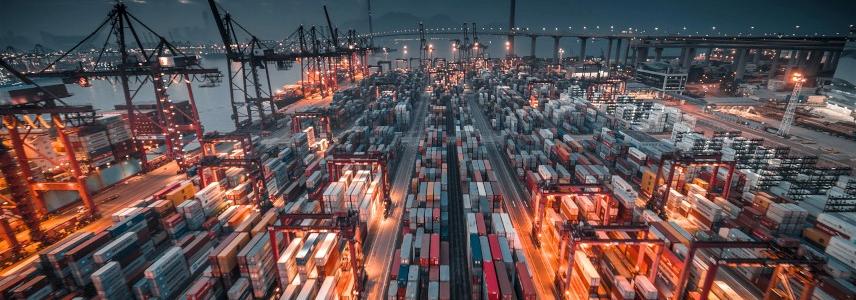Global container shortage pushes seafood prices up

The European seafood market is recovering quickly as countries ease COVID-19 measures. Still, most supplying nations are struggling with container shortages. As a result, shipment prices have hugely increased, and European buyers are searching for new suppliers. This might create opportunities for exporters from developing countries.
Frozen fish and seafood is one of the most traded food categories. Producing countries are often geographically distant from the purchasing country. In 2020, the trade of frozen fish and seafood reached a value of around 100 billion USD. The majority of products were shipped in a refrigerated container.
Fewer shipments due to social distancing
At the start of the COVID-19 pandemic, many day-to-day operations were disrupted or stopped. This included the transport of frozen fish and seafood. Social distancing had a huge impact at the port handling level. Transhipment of containers was reduced and, as a result, fewer containers were moved. This resulted in containers being stuck at port facilities.
Scarcity of containers
The delay in container transhipment meant fewer containers were available for new shipments. The scarcity of containers and the growing demand pushed the prices for shipping containers up. A European importer stated, “We are paying between 11,000 and 16,000 USD for shipping a container of frozen seafood items. Before the COVID-19 pandemic, this was around 2,000-3,000 USD.”
Higher transport costs push up seafood prices
The container price increase puts pressure on end-market prices. In this end, this pushes consumer prices for seafood up. Still, there is a limit to what a consumer will pay. As an exporter, you might encounter buyers that ask for a price reduction to retain their margins.
Countries in the European market are reducing measures and restrictions as the vaccination rate increases. But this is not the case for supplying countries. Over the last months, countries such as China, India and Vietnam have had to put new measures in place to reduce the spread of infection. This has caused another reduction in transhipments, increasing the backlog in container availability even more. For example, the shipment period to Europe for some Asian exporters normally ranges from 30-40 days but is now taking 60-80 days.
Buyers are looking for new suppliers
To ensure the availability and steady supply of seafood, European buyers are now searching for other suppliers to meet demand. For example, shrimp importers are now actively sourcing and purchasing from Latin American countries like Ecuador, Honduras and Venezuela. As an exporter, this might be a good opportunity to start or expand your business in Europe. Read our study to get tips on how to find a buyer in Europe.
Container prices to remain high
COVID-19 is still a concern, especially in developing countries. So, it is not easy to predict how long the container shortage will last. Some logistical experts expect that prices will likely correct in 6 to 18 months but will be slightly higher than before the pandemic. Some companies are now investing in building more containers and ships. Experts expect that the high demand for frozen fish and seafood will decrease at the beginning of 2022. Holiday purchases have now ended in all major markets. This may allow port handlers to reduce the backlog of containers.
Both exporters and buyers should expect prices to remain high in the coming months. As an exporter, you should stay in direct contact with your buyer. Keep them informed about the measures within your country and their effect on shipments. Read our study with tips on how to do business with your buyer and maintain your relationship.
Stay informed
To stay informed on the latest developments in the seafood sector, subscribe to our newsletter.
Seafood TIP wrote this news article for CBI.